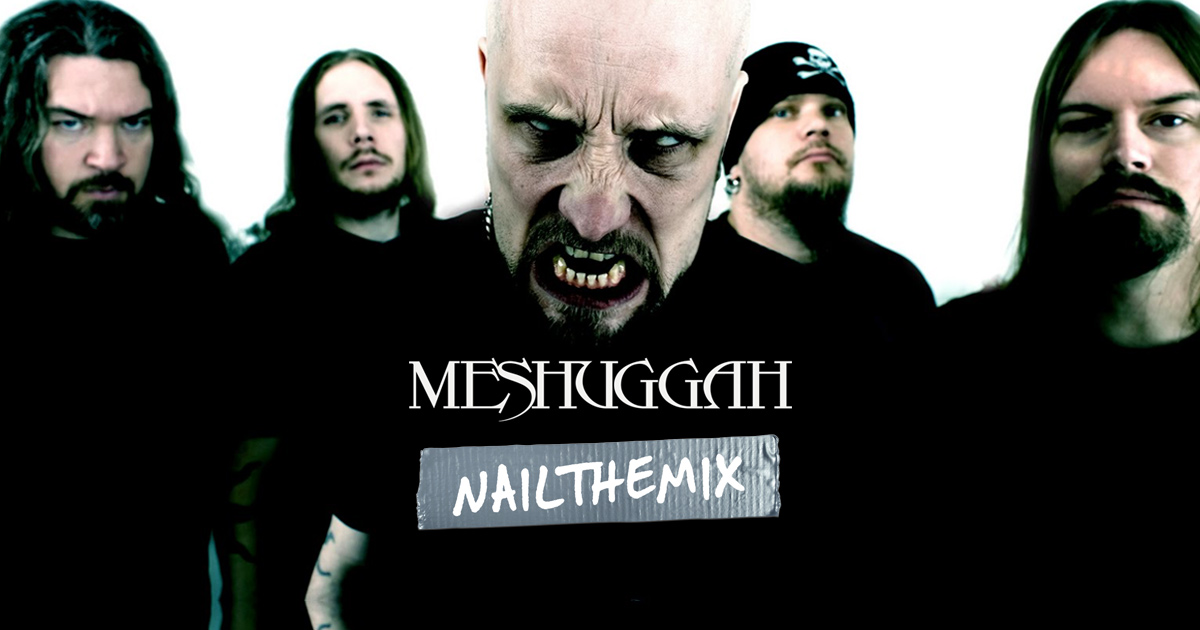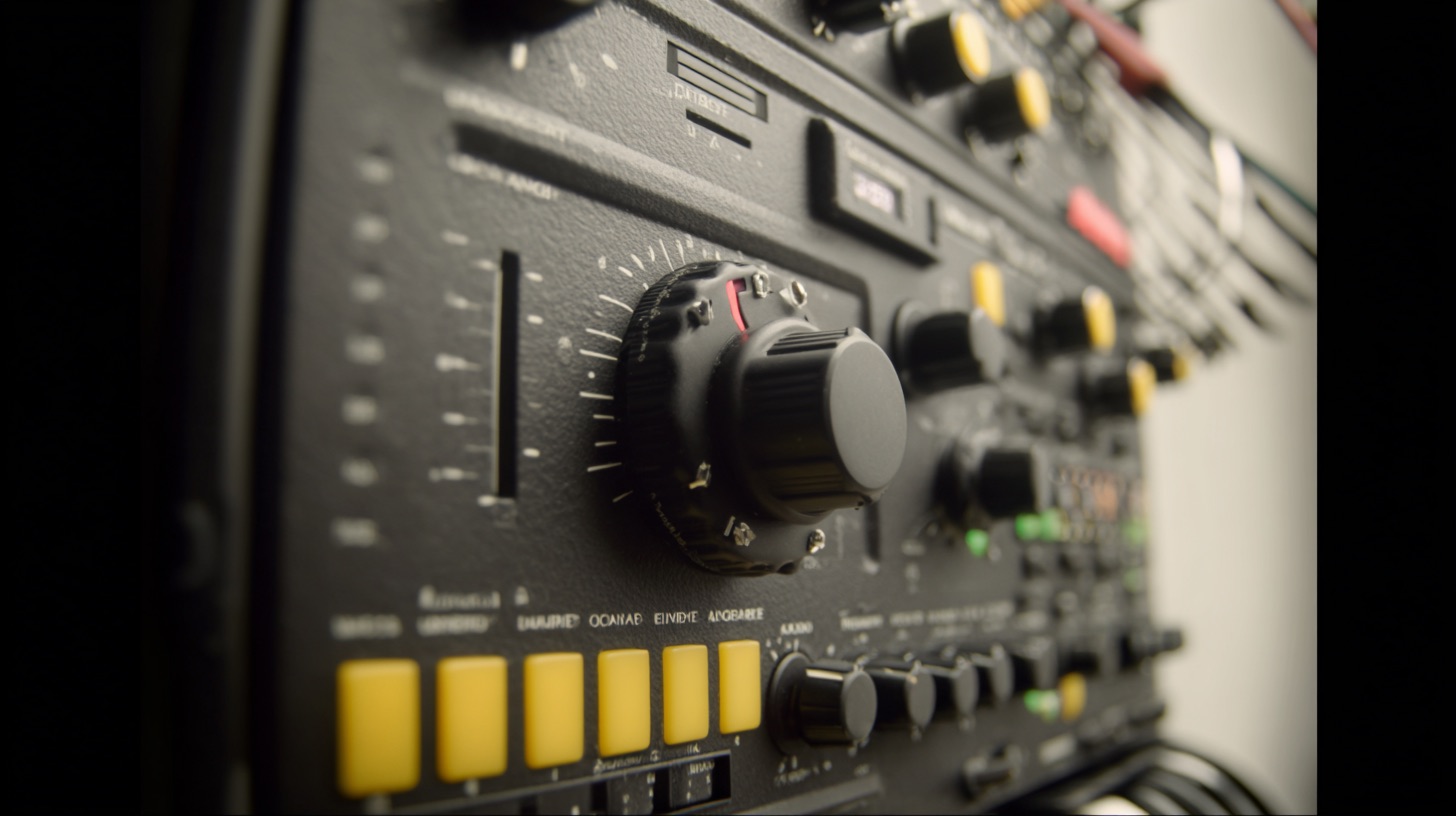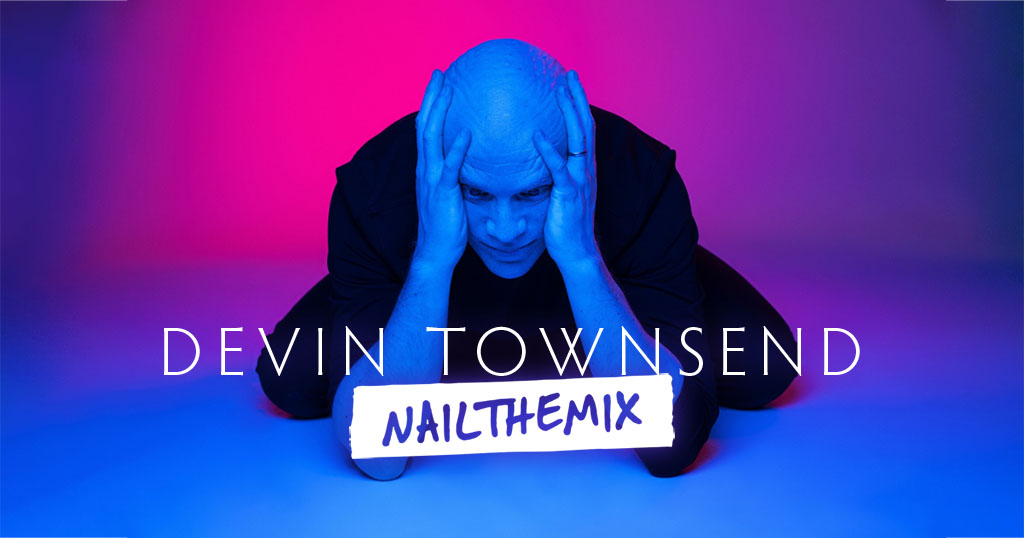
Mixing Meshuggah’s Crushing Guitars with Tue Madsen
Nail The Mix Staff
Let’s face it, Meshuggah’s guitar tone is a beast of its own. It’s a dense, technically complex, and rhythmically punishing wall of sound that has baffled producers for decades. How do you take something so immense and make it clear, tight, and even more aggressive in a mix?
We got to watch a master at work when legendary producer Tue Madsen (The Haunted, Behemoth) opened up his actual session to mix the Meshuggah track “Born in Dissonance.” Tue’s approach, which relies on a surgical EQ to build a wall of tone, is a masterclass in focusing on what matters: starting with a great source tone and then using surgical precision—not brute force—to clean it up and let the core aggression and powerful distortion shine.
Forget burying your tracks in plugins. Let’s break down some of the killer techniques Tue used to tame and tighten these legendary tones, which you can see in full in his Nail The Mix session.
The Foundation: Amp Blends and Smart Gain Staging
Before a single plugin was loaded, the core of the sound was already there. The blend between Meshuggah’s several amps was decided during tracking and largely left alone. The mix wasn’t about reinventing the tone, but enhancing it.
One interesting element was the use of “half-gainy” guitars for certain sections. But how did they achieve this without running back and forth to a wall of cranked amps between takes?
The Lazy (and Brilliant) Gain Trick
The answer was simple and practical: they just rolled back the volume knob on the guitars themselves. Instead of tweaking four different amp heads, a quick turn of the pot on the instrument was enough to clean up the sound for the lower-gain parts. As Tue pointed out, you can even see the difference in the DI waveforms—the signal is significantly lower. It’s a prime example of a “work smart, not hard” studio move that demonstrates a core understanding of what gain is and how to control it at the source.
Tue’s Not-So-Secret Weapon: The “C-Word”
One of the most revealing moments came when Tue soloed a specific piece of gear—what he jokingly called the “C-word.” This was a classic stereo chorus/flanger pedal, a long-time favorite of his, placed on the guitars before any other processing.
When you hear the guitars with it, you might not notice it’s there. But when he bypassed it, the sound suddenly felt smaller and more sterile. Take it away, and you miss it like crazy. This subtle modulation adds a unique width, movement, and character that helps the guitars feel more three-dimensional. Getting this to lock in with the punishing Meshuggah bass is the next challenge.
The Art of Subtractive EQ: Cleaning Up the Noise
Here’s where Tue’s surgical approach really comes into play. Instead of broad, sweeping EQ boosts, his primary focus was on cleaning up the existing tone by finding and removing annoying frequencies. These aren’t necessarily “bad” frequencies in every context, but in a dense metal mix, they can build up into a harsh, distracting mess. This is a core concept in how to EQ metal guitar for maximum clarity.
The Sweep-and-Destroy Technique
Tue’s method is ruthlessly effective. He uses a digital EQ plugin with a very narrow, steep boost (a high Q setting) and sweeps it across the frequency spectrum while the guitars are playing.
As you sweep, you listen for frequencies that jump out, whistle, or ring out unnaturally. These are often static, resonant peaks that don’t have much to do with the musical information of the guitar riff itself. They’re just noise riding on top of the tone.
That “Shoulders Relaxing” Feeling
Once you find one of these whistling frequencies, you flip the boost into a cut, pulling the offending sound down. As Tue described it, finding and removing that noise is like a physical release—your shoulders just relax. The guitar tone doesn’t fundamentally change, but it instantly sounds cleaner and less fatiguing to listen to, especially at high volumes. That “annoying guy whistling in the background,” as he put it, is finally gone.
Avoiding the EQ Vortex
A word of caution: this technique can be a slippery slope. If you’re not careful, you can get caught in an “EQ vortex.” You cut one annoying frequency, which makes you notice another one. You cut that, and another one pops up. Before you know it, your EQ curve looks like a mountain range and you’ve completely gutted the life out of your tone.
The Level-Matched A/B Test
To avoid this, Tue shared a crucial piece of advice: always A/B your EQ changes. And most importantly, do it at the same perceived volume.
When you make a bunch of EQ cuts, the overall signal gets quieter. When you bypass the plugin, the louder, unprocessed signal might trick your brain into thinking it sounds better. To combat this, lower the input or raise the output gain on your EQ plugin so that the volume is consistent whether the plugin is on or off. This allows you to make an honest judgment: “Did I actually make the tone better, or just different?”
Enhancing Aggression by Taking Away
Once you’ve cleaned up the distracting noise, you’ve earned the right to get more aggressive. By surgically carving out those nasty, thin, whistling spikes in the upper-mids and highs, you create headroom to boost the good stuff.
Now you can add a broader high-shelf boost to bring out that satisfying pick attack and scratchy bite without also cranking up the harshness you just removed. The result is a guitar tone that sounds tighter, more focused, and allows you to push the volume even higher without it becoming painful. It helps you focus on the music, not the noise.
Of course, Tue Madsen’s methods are just one way to tackle these iconic sounds; other producers have unique ways of mixing Meshuggah’s lead guitars as well.
See How The Pros Do It
Tue Madsen’s approach to mixing Meshuggah is a masterclass in taste, precision, and knowing when not to do something. It’s about enhancing the raw power of the performance, not burying it.
Meshuggah on Nail The Mix
Tue Madsen mixes "MonstroCity"
Get the Session
These actionable techniques are a fantastic starting point for cleaning up and tightening your own heavy guitar tones. But reading about them is one thing—seeing them applied in real-time on a real session is another.
Our catalog of Nail The Mix sessions puts you in the room with the world’s best producers every single month. You get the raw multi-tracks from bands like Meshuggah, Gojira, and Periphery and watch the original producer mix the song from scratch, explaining every plugin, every fader move, and every decision along the way.
Want to see exactly how Tue Madsen dialed in every part of this monstrous mix? Watch the full Meshuggah session on Nail The Mix today!
Get a new set of multi-tracks every month from a world-class artist, a livestream with the producer who mixed it, 100+ tutorials, our exclusive plugins and more
Get Started for $1





